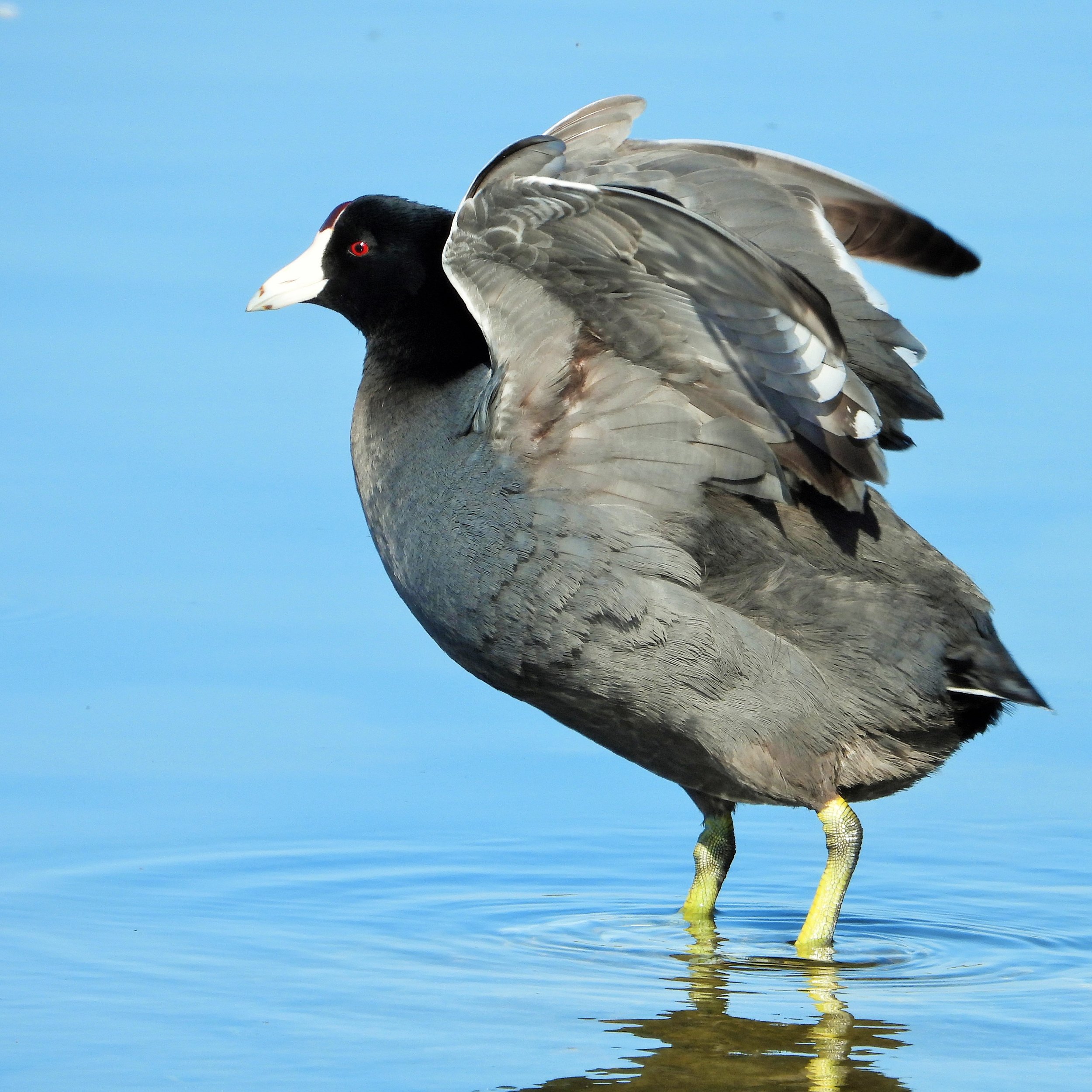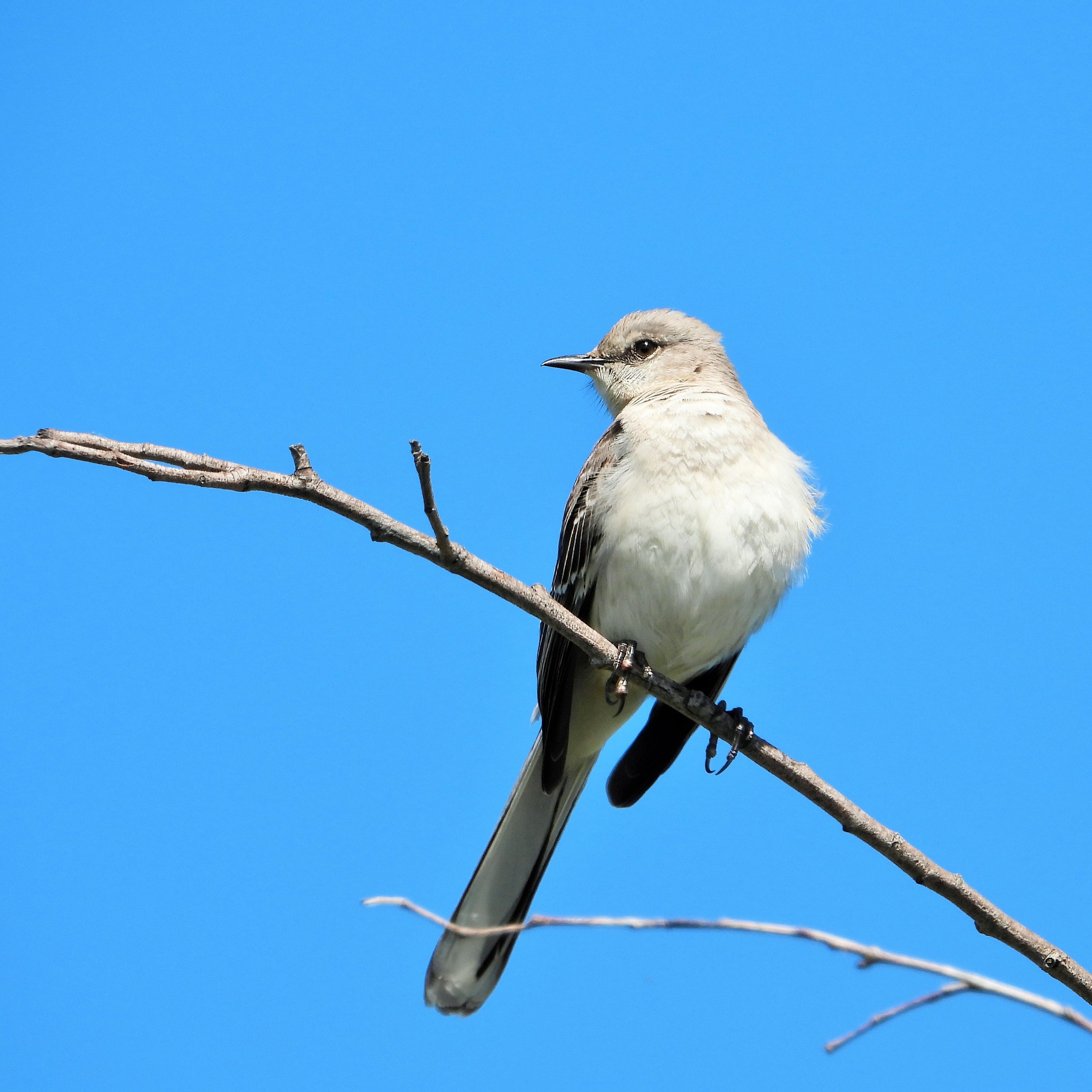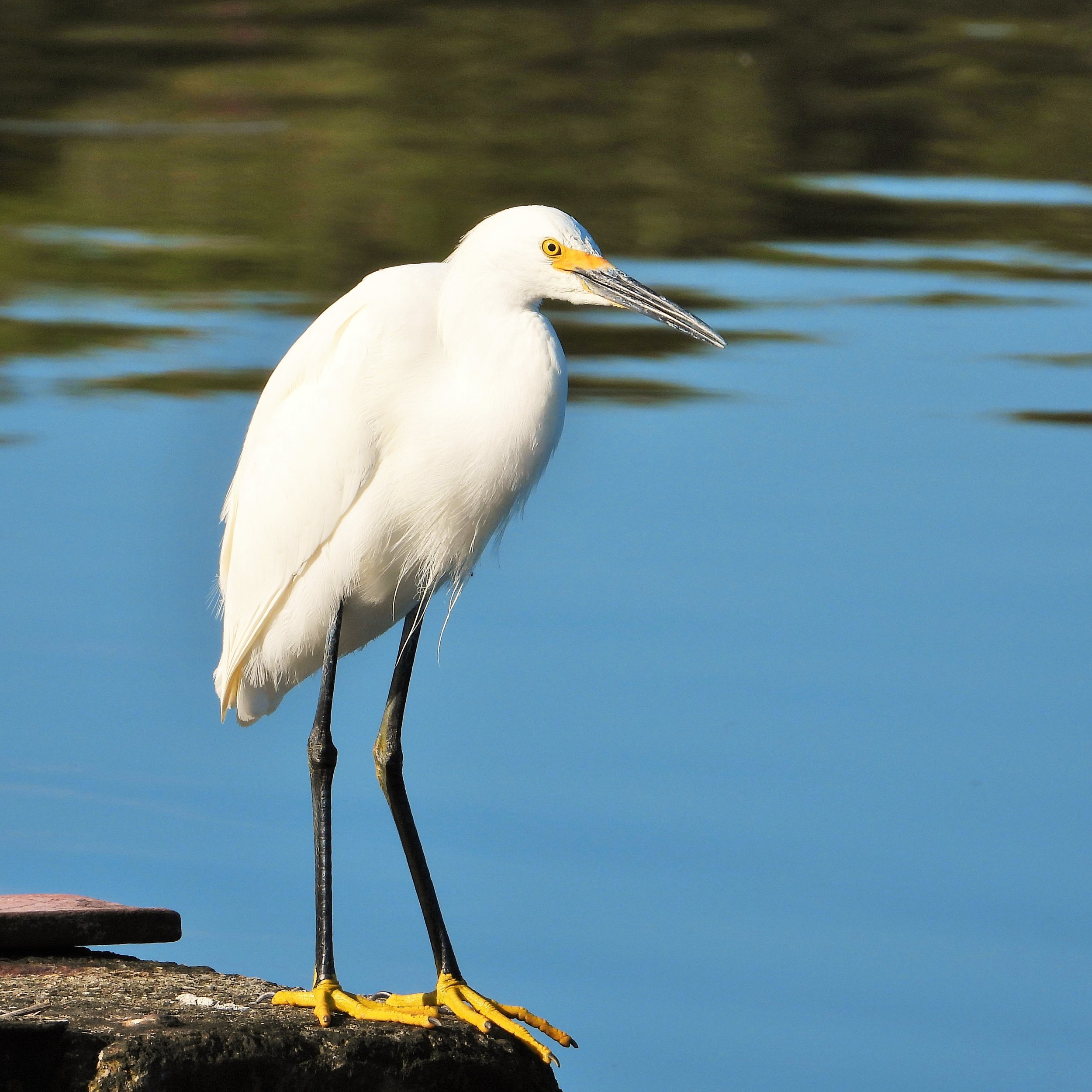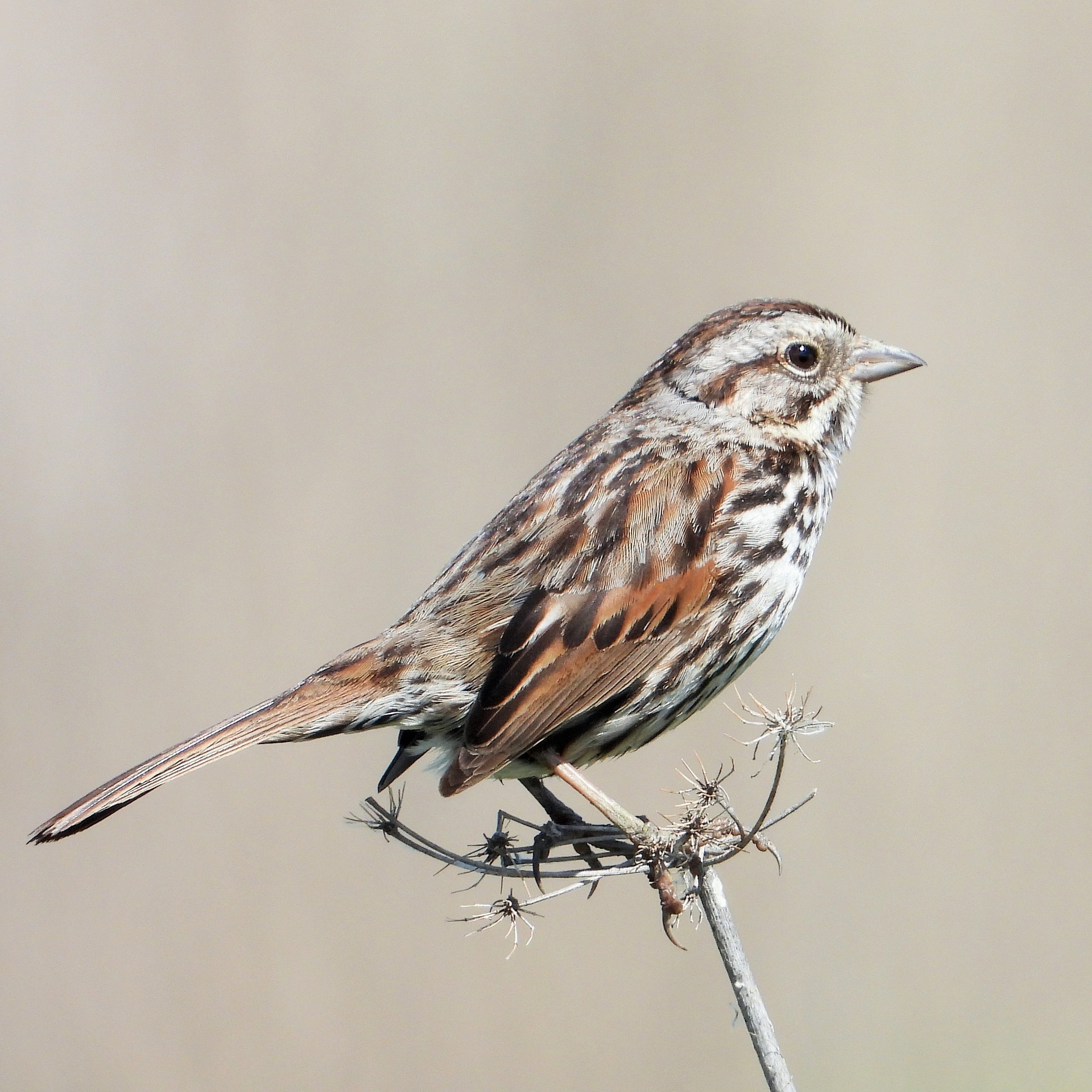18 April 2024
7:46 – 11:46am
This year was our second time participating in Birdathon. We decided to create our own team, the Double-counted Cormorants, and do a 4-hour photography Birdathon, to see how many species we could count and photograph in a four-hour period. We considered visiting multiple sites to see a wider variety of species, but in the end decided to stick with a single location, Shoreline Lake, to avoid using any of our time driving around.
Upon arrival, we saw our first bird before even getting out of the car – a beautiful Red-tailed Hawk atop a street light, enjoying a breakfast of squirrel.
While we didn’t see any unexpected species, we did find a good variety of birds – from geese, ducks, grebes, coots, shorebirds, gulls, skimmers, terns, egrets, and herons on the water; to swallows, finches, sparrows, and others in the surrounding shoreline areas.
Although we did see some still remaining “winter“ species, such as White-crowned Sparrow and Golden- crowned Sparrow, many signs that the breeding season has begun were evident. Black Skimmers were back on the island. There were several families of Canada Geese with goslings. Some of the Eared Grebes were in their breeding plumage. Many songbirds were singing. A pair of Western Bluebirds and a pair of Tree Swallows seemed to be interested in the same nesting site.
We were very happy to see some of our namesake species, the Double-crested Cormorant. They’re a favorite photography subject of mine, with their elegant black plumage and bright teal blue eyes.
When our time ran out, we had counted 45 species, and I had photographed 42 of them. In addition to the birds, we also saw and photographed Black-tailed Jackrabbit, California Ground Squirrel, and Gray Squirrel. Our full checklist can be viewed at https://ebird.org/checklist/S169750106. We had a fabulous morning of birding, and we’re very pleased that we could help SCVAS raise funds for the abundance of programs they offer to educate our region’s diverse population about the importance of preserving open spaces for both wildlife and our own well-being.
All photos by Carol Ann Krug Graves








